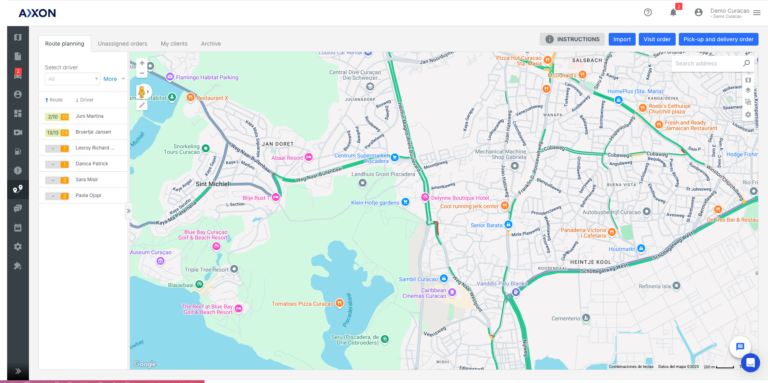All About Vehicle Inspections
Later in the week, another vehicle faces a preventable accident due to worn-out brakes. By the end of the month, unexpected repair bills are piling up, your team's morale is plummeting, and customer trust is on shaky ground. Does this scenario sound familiar? If it does, there's a good chance that regular vehicle inspections might be the missing piece in your fleet management puzzle.
Routine vehicle checks are more than just a formality. They're a proactive approach to fleet management that can help sidestep these challenges, ensuring that your vehicles not only run smoothly but also reinforce the reliability and professionalism of your business. Dive in with us to explore the pivotal role of inspections and how they can transform your fleet's operations.
1. Why Vehicle Inspections Are Important
- Safety: Regular inspections ensure that all vehicle components are in good working condition. This minimizes the risk of accidents due to equipment failures.
- Compliance: Conducting regular vehicle inspections will help you create a culture of compliance among your drivers.
- Prolonged Vehicle Life: Catching and addressing issues early can increase the lifespan of your vehicles.
- Cost Savings: Addressing minor problems before they become major ones can save you significant amounts in repair costs.
2. How Vehicle Inspections Help Fleet Managers
- Efficient Fleet Operations: Knowing the state of each vehicle helps in planning and ensures there's no unexpected vehicle downtime.
- Budgeting: Regularly scheduled inspections can help predict maintenance costs, assisting in budget forecasting.
- Improved Team Morale: A well-maintained fleet shows drivers that their safety is a priority.
3. The Easiest Way to Conduct Inspections
- Checklist: Create a standard inspection checklist for drivers to follow. This should cover basics such as brakes, tires, lights, and other essential systems.
- Regular Scheduling: Set specific days or intervals for inspections. This could be daily, weekly, or monthly, depending on your fleet's needs.
- Use Technology: There are many fleet management software tools available, like Axxon that can help automate the inspection process and remind drivers when inspections are due.
4. Analyzing Inspection Results
- Track Trends: Are there frequent issues with a particular vehicle's make or model? Noticing patterns can help make informed decisions when purchasing new vehicles.
- Feedback Loop with Drivers: Encourage drivers to report any issues they notice while on the road. Their real-time feedback is invaluable.
- Prioritize Repairs: Not all issues need immediate attention. Based on the results, prioritize which vehicles need urgent repairs and which can wait.
- Frequent wear: Noticing that certain vehicles consistently require replacements of specific parts, like brake pads, earlier than usual? It might not just be the vehicle's issue. Often, frequent wear of certain components can be indicative of driving behavior. For instance, rapidly wearing out brake pads could suggest that the driver is frequently braking hard or not maintaining consistent speeds.
5. Making Vehicle Inspections a Habit
- Training: Offer regular training sessions for drivers on the importance of inspections and how to conduct them.
- Incentives: Consider offering incentives or rewards for drivers who consistently carry out thorough inspections.
- Lead by Example: As a fleet manager, emphasize the importance of inspections in meetings and communications. Your team will likely follow suit.
- Regular Reviews: Set aside time regularly to review inspection findings with the team. This keeps the process at the forefront of everyone's mind.
In Conclusion
Regular vehicle inspections are not just a box to tick; they're a crucial aspect of maintaining a safe, efficient, and cost-effective fleet. By understanding their importance, implementing them effectively, analyzing results, and making it a regular habit, fleet managers can ensure smooth operations and a long life for their vehicles. This might involve providing additional training to specific drivers, reminding them of safe driving practices, etc. By doing so, you not only extend the life of vehicle parts but also enhance overall road safety.



